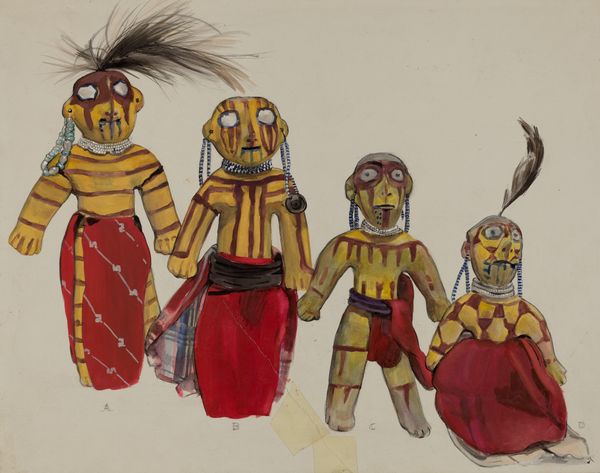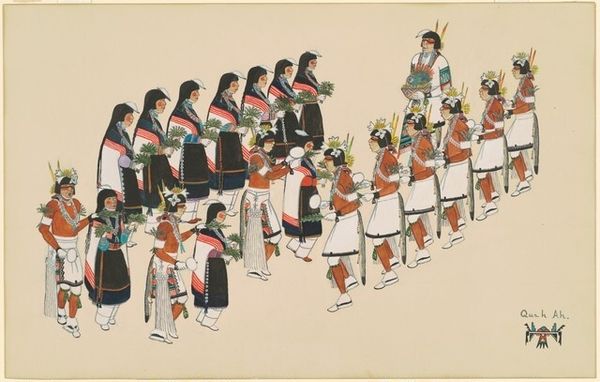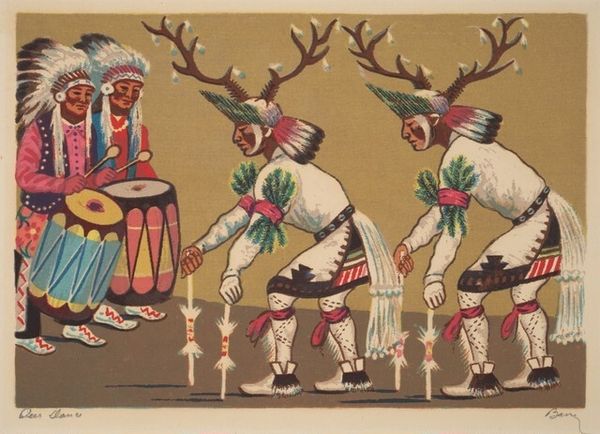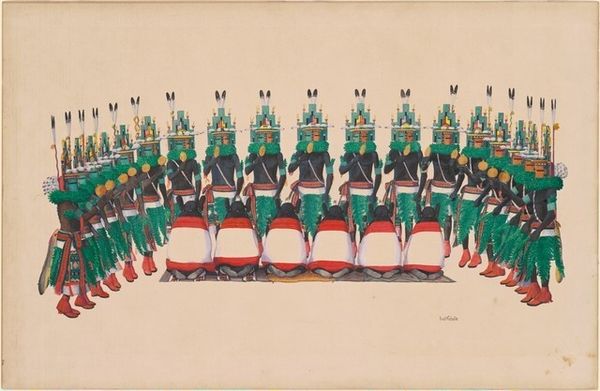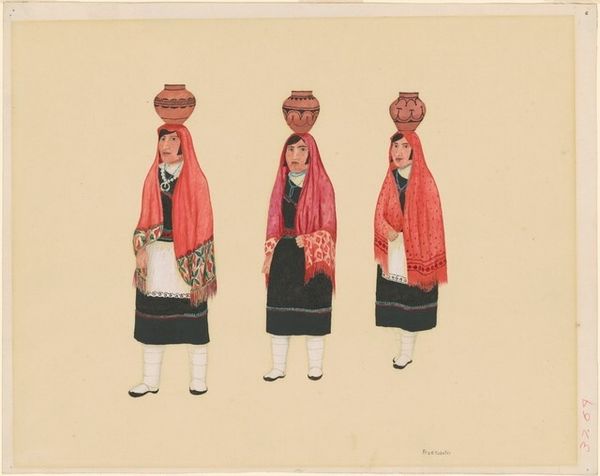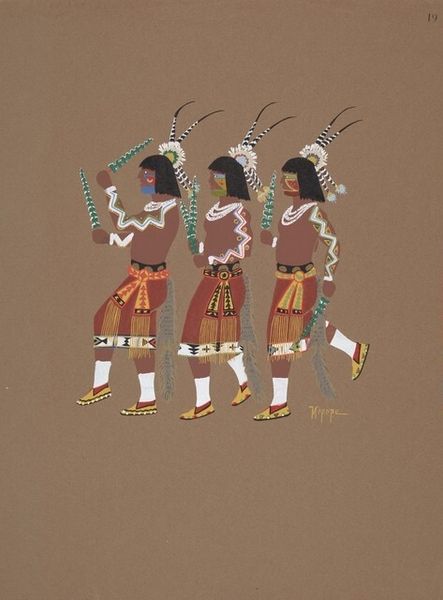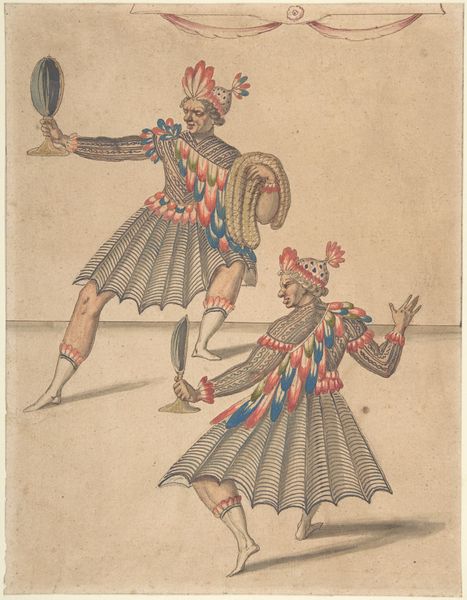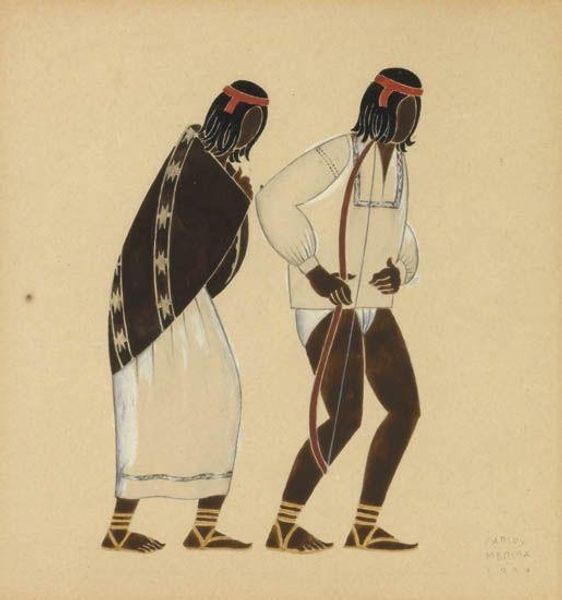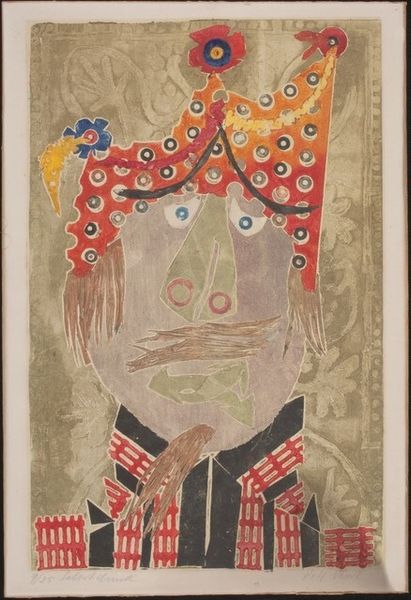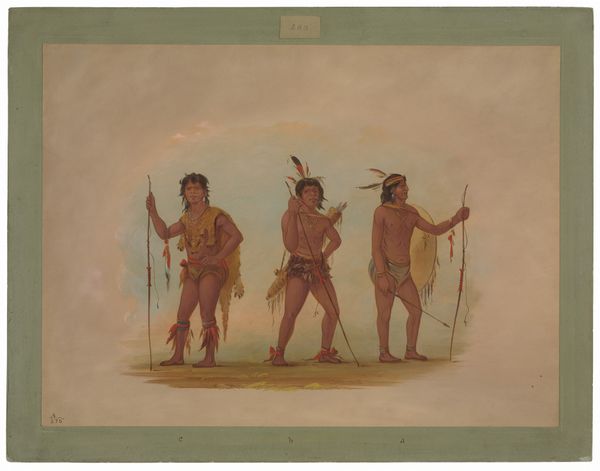
drawing, paper
#
drawing
#
figuration
#
paper
#
watercolour illustration
#
indigenous-americas
Dimensions: sheet: 37.15 × 57.47 cm (14 5/8 × 22 5/8 in.) board: 40.64 × 62.23 cm (16 × 24 1/2 in.)
Copyright: National Gallery of Art: CC0 1.0
Curator: Here we have "Long-Haired Kachinas," a watercolor illustration from around the 1930s by Patricio Toya. What’s your initial impression? Editor: They look…patient. Immobile, yet like they hold a story they’re just waiting to dance out. Is there a story embedded in how these figures are rendered? Curator: Well, materially speaking, what stands out is the layering, which, to me, feels deliberate and spiritual. Toya created a layering effect by putting thin washes of colors down so that you can still see the underdrawing and the various layers, especially on the clothing details. He builds figures and patterns with care to show the richness of the performance costumes. Editor: I can appreciate that care—the attention to detail is undeniable. What’s particularly striking, from my perspective, is that he created a repetitive yet unique design on what appear to be aprons of a woven or cotton material. Curator: Yes! And it highlights the skill that is embodied within folk traditions; in essence, you are taking base-level materials, like dyes and simple line work, to create a representation that can honor their community and the traditions it embodies. They aren’t perfect; they are not trying to emulate what a commercial printing pattern might embody—which is what I admire about the intentional imperfection of folk-art materials like the clothing in this painting. Editor: You make a fantastic point—I can appreciate the role this method played in the communities where those particular folk traditions and stories took form. Did the indigenous artists who made this seek commercial validation, or were they trying to honor folk forms as a means of expression? Curator: What intrigues me is that “Long-Haired Kachinas” serves as a tangible link to a profound and sacred world. These are not merely portraits; they are windows into living traditions. When you really look at the time, labor, and technique involved to portray their Kachinas—you get the reverence the artist held for this work and community. Editor: That reverence, I think, adds such an element of depth—something that resonates in our understanding now. It's not just art, is it? It’s…remembrance. Thank you for that glimpse.
Comments
No comments
Be the first to comment and join the conversation on the ultimate creative platform.
